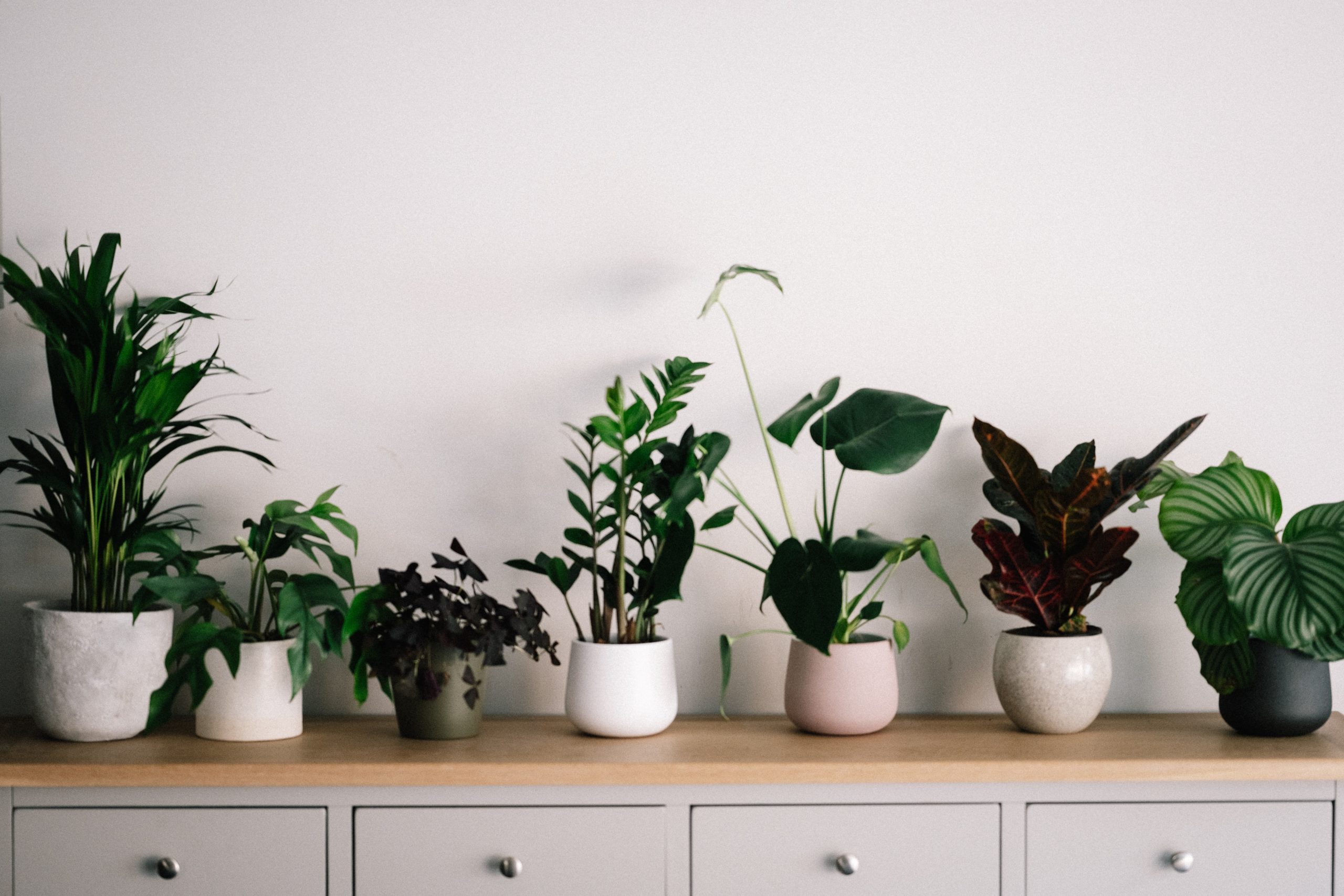In today’s urbanized world, where concrete jungles often overshadow green landscapes, the importance of indoor environments becomes paramount. As we increasingly find solace within the confines of our homes and offices, the quality of the air we breathe indoors takes center stage. Indoor air quality, often abbreviated as IAQ, is not just about comfort; it’s intrinsically linked to our health, well-being, and overall quality of life. Poor IAQ can lead to a range of health issues, from minor irritations like allergies to more severe respiratory conditions.
Enter houseplants, nature’s very own air purifiers. These green companions do more than just add aesthetic appeal to our living spaces. They play a pivotal role in enhancing the quality of indoor air, making our environments healthier and more conducive to well-being. The idea that plants can purify indoor air isn’t new. For centuries, cultures around the world have intuitively understood the benefits of having plants indoors, from their mood-enhancing qualities to their ability to refresh the air.
Modern science has reinforced this ancient wisdom. Research has shown that certain houseplants can absorb and neutralize various indoor pollutants, acting as natural filters. They take in harmful compounds and release oxygen, actively participating in creating a balanced indoor ecosystem. Moreover, in a world where technological solutions often dominate discussions about improving IAQ, such as advanced HVAC systems and air purifiers, houseplants offer a sustainable, eco-friendly alternative. They remind us that sometimes, nature already has the answers we seek.
But it’s not just about air purification. Houseplants contribute to a holistic sense of well-being. Their presence can reduce stress, improve mood, and boost productivity. In essence, they bridge the gap between the outdoor world and our indoor spaces, bringing a touch of nature into our daily lives. As we delve deeper into the topic, we’ll explore the science behind how houseplants enhance indoor air quality, the specific indoor air pollutants they combat, and the best plants for the job. Whether you’re a seasoned gardener or someone just looking to improve their living space, understanding the role of houseplants in enhancing IAQ is a journey worth embarking on.
Understanding Indoor Air Quality Standards
Indoor air quality (IAQ) is a term that encompasses the environmental characteristics within buildings that may affect human health, comfort, or work performance. As we spend a significant portion of our lives indoors, whether in our homes, workplaces, or recreational spaces, the quality of the air we breathe in these environments is of paramount importance. Over the years, the recognition of the significance of IAQ has led to the establishment of various standards and guidelines to ensure the health and safety of occupants.
OSHA Standards: The Occupational Safety and Health Administration (OSHA) is primarily concerned with ensuring safe and healthy working conditions. Recognizing the impact of indoor air quality on workers’ health and productivity, OSHA has set forth guidelines that address various indoor air pollutants. These standards cover a range of issues, from ventilation requirements to permissible exposure limits for specific contaminants. By adhering to OSHA’s guidelines, employers can ensure that their workplaces are not only compliant but also conducive to the well-being of their employees.
EPA Standards: The Environmental Protection Agency (EPA) plays a critical role in safeguarding both outdoor and indoor environments. While the EPA doesn’t regulate indoor air quality in private homes, it offers valuable resources and guidelines on common indoor air pollutants. From radon to secondhand smoke, the EPA provides insights into the sources, health effects, and strategies to reduce exposure to these pollutants. Their guidelines serve as a foundation for homeowners, builders, and facility managers to create healthier indoor environments.
ASHRAE Standards: The American Society of Heating, Refrigerating, and Air-Conditioning Engineers (ASHRAE) is a global society advancing human well-being through sustainable technology for the built environment. ASHRAE’s standards for ventilation and indoor air quality are widely recognized and adopted. These standards provide comprehensive guidance on ventilation system design and operation, ensuring that buildings have an adequate supply of fresh air. By following ASHRAE standards, building professionals can ensure optimal indoor air quality, balancing energy efficiency with the health and comfort of building occupants.
While these organizations provide robust frameworks for indoor air quality, it’s essential to understand that IAQ is a dynamic field. As research advances and our understanding of pollutants and their effects on health deepens, these standards evolve. Moreover, while these standards provide a baseline, achieving optimal indoor air quality often requires a combination of strategies. From technological solutions like air purifiers and advanced HVAC systems to natural interventions like houseplants, enhancing IAQ is a multifaceted endeavor.
Incorporating houseplants into indoor spaces is a step towards aligning with these standards, especially in spaces where technological interventions might be limited or costly. Plants not only beautify our surroundings but also actively participate in filtering and purifying the air, making them invaluable allies in our quest for better indoor air quality.
Houseplants and Indoor Air Quality
The symbiotic relationship between humans and plants is ancient and profound. While we’ve always appreciated the aesthetic and emotional uplift that plants bring to our spaces, their role in enhancing indoor air quality has garnered significant attention in recent decades. This renewed interest stems from a growing understanding of the myriad ways plants interact with their environment, especially the air around them.
At the heart of this interaction is the process of photosynthesis. As plants absorb carbon dioxide, they release oxygen, a process that already aids in creating a fresher indoor environment. But the benefits of houseplants go beyond this basic exchange. As they take in air through their leaves, many plants can also absorb and neutralize specific toxins, acting as natural air purifiers. These toxins, often byproducts of modern living, include common indoor pollutants like benzene, formaldehyde, and trichloroethylene. Over time, these pollutants can accumulate in indoor spaces, especially in well-insulated homes or offices with limited ventilation.
The idea that houseplants can serve as natural air purifiers gained traction after a landmark study by NASA in the 1980s. This study aimed to find solutions for purifying the air in space stations. Researchers discovered that certain houseplants were particularly adept at removing specific toxins from the air, making them invaluable for closed environments. This revelation had profound implications for our indoor spaces on Earth, especially as urbanization trends have led to people spending more time indoors.
Beyond their air-purifying capabilities, houseplants also play a role in regulating indoor humidity. Through a process called transpiration, plants release water vapor, which can increase ambient humidity. This can be particularly beneficial in environments where the air tends to be dry, as increased humidity can reduce respiratory irritations and make breathing more comfortable.
Moreover, the presence of plants indoors can have psychological benefits. Numerous studies have shown that being around plants can reduce stress, increase productivity, and improve mood. This means that houseplants not only contribute to physical well-being by improving air quality but also play a role in emotional well-being.
Incorporating houseplants into our living and working spaces is akin to bringing a piece of the outdoors inside. They act as a bridge, connecting us to nature even when we’re surrounded by concrete and glass. As urban living continues to distance us from natural environments, houseplants offer a touch of green, a breath of fresh air, and a reminder of the intricate web of life to which we all belong.
The Green Advantage: Houseplants Elevating Indoor Air Quality
In the intricate dance of life, nature often provides solutions to challenges we face, and indoor air quality is no exception. As urbanization continues and our lives become increasingly indoor-centric, the quest for cleaner, healthier indoor environments becomes paramount. Houseplants, with their innate ability to purify air, offer a sustainable and aesthetically pleasing solution to this challenge.
From the robust ZZ plant thriving in dimly lit corners to the elegant peace lily gracing sunlit windows, each plant plays its part in creating a healthier indoor atmosphere. They don’t just add visual appeal; they actively combat pollutants, regulate humidity, and contribute to our overall well-being. In spaces where technological interventions might be limited or costly, plants emerge as cost-effective and eco-friendly allies in the pursuit of optimal indoor air quality.
Moreover, as we navigate the complexities of modern living, the psychological benefits of houseplants cannot be overlooked. Their presence reduces stress, boosts mood, and fosters a connection to nature, reminding us of the delicate balance and interdependence of life.
Incorporating houseplants into our living and working spaces is more than just a design choice. It’s a commitment to health, well-being, and sustainability. By understanding and harnessing the power of plants, we can create indoor environments that are not only beautiful but also conducive to our health, aligning with indoor air quality standards set by organizations like OSHA, EPA, and ASHRAE. As we move forward, let’s embrace the green advantage, recognizing houseplants as invaluable partners in our journey towards cleaner, healthier indoor spaces.





